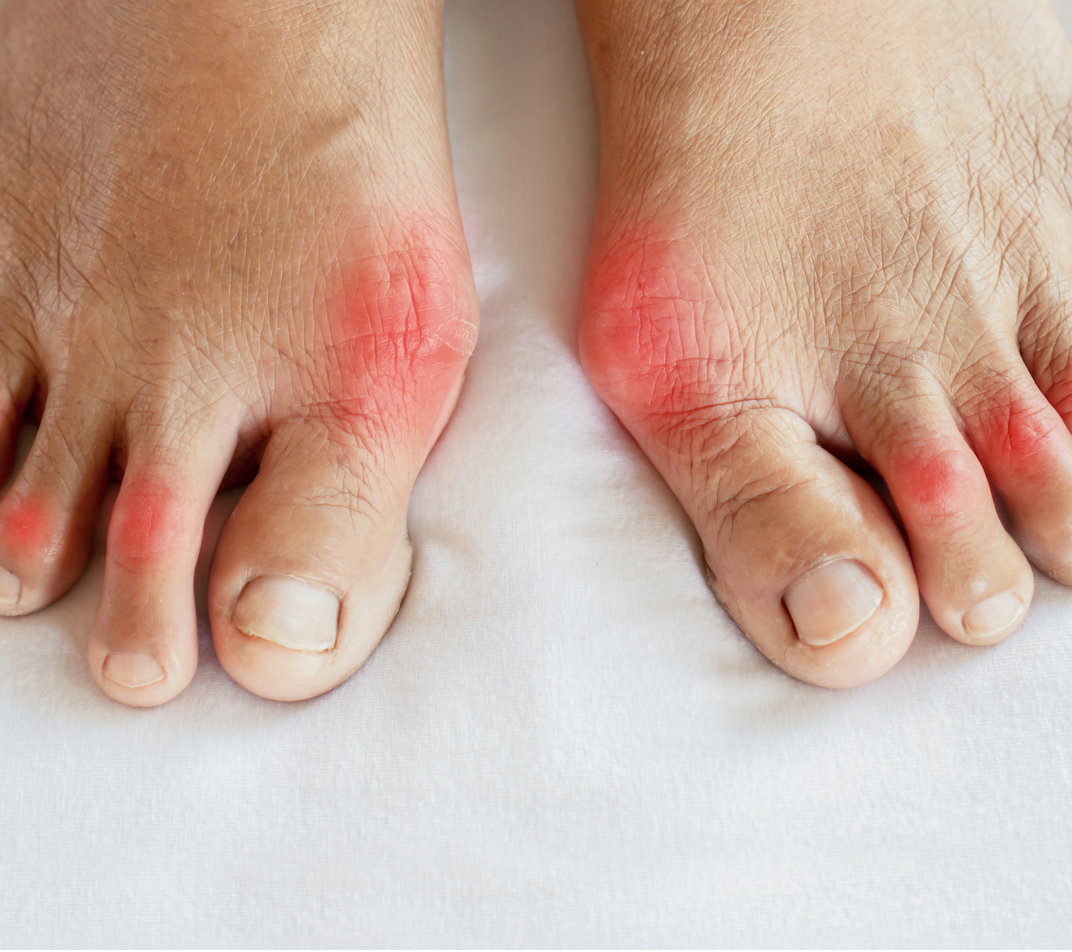Article
Pegloticase and Methotrexate Co-Therapy Improved Urate Burden, Patient-Reported Outcomes in Gout
Author(s):
Serum urate rapidly declined after initiation of pegloticase and methotrexate therapy and was maintained well below ≥ 6 mg/dL, an indicator of uncontrolled gout, throughout the study.
Treating patients with gout with concurrent pegloticase and methotrexate (MTX) therapy resulted in lowered serum urate levels and improvements in patient-reported outcomes, clinical measures, and urate burden, according to a study published in Arthritis Research and Therapy.1

“Uncontrolled/refractory gout patients are recalcitrant/intolerant to oral urate-lowering therapies (ULTs), experiencing frequent gout flares, functionally limiting tophi, and low quality of life,” investigators stated. “Pegloticase lowers urate, but anti-pegloticase antibodies limit urate-lowering efficacy and increase infusion reaction (IR) risk. Immunomodulator + pegloticase co-administration may improve treatment response rates.”
Adult patients with uncontrolled gout, defined as SU ≥ 6 mg/dL despite ULT use and intolerance/recalcitrance to ULT or functionally limiting tophaceous deposits, were included in the multi-center, open-label, single-arm, efficacy and safety study. Patients received oral MTX 15 mg/week and folic acid 1 mg/day for 4 weeks prior to and during pegloticase treatment (8 mg infusion, biweekly, ≤ 52 weeks). Gout flare prophylaxis, including nonsteroidal anti-inflammatory durugs (NSAIDs), low-dose prednisone (≤ 10 mg/day), and/or colchicine, was administered at least 1 week prior to and during pegloticase treatment. Outcomes of the trial focused on changes from baseline (CFB) regarding number of tender and swollen joints, Gout Global Assessments, and Health Assessment Questionnaires (HAQs).
Ultimately, 13 patients received 1 or more pegloticase infusion and were included in the 52-week analyses. All patients were male, with an average age of 49.3 years, and SU was 9.2 ± 2.5 mg/dL at baseline. During the study, 3 patients discontinued treatment due to a rise in SU. Of the 10 patients that completed the evaluations, 8 completed 52 weeks of pegloticase and MTX co-therapy and 2 completed 24 weeks, after having met their treatment goals.
SU rapidly declined after initiation of pegloticase and was maintained below 6 mg/dL throughout the study. The 10 patients with SU measurements at 1 year had mean SU of 1.1 ± 2.5 mg/dL. For those remaining on study treatment through 1 year, all reported consistent SU lowering. Additionally, improvements were reported in HAQ pain (CFB: - 33.6) and health (CFB: - 0.7), the number of tender (CFB: - 5.6), swollen (CFB: - 8.4), and tophi-affected joints (CFB: - 6.0). At the end of treatment, 90.9% (n = 10) had no swollen joints and 63.6% (n = 7) had no tender joints, which were maintained through 6 months post-treatment. Patient and Physical Global Assessments also improved (CBF: - 4.6 and – 5.7, respectively), with scores of either 0 (“excellent health”) or 1 reported in 60% of patients and 90% of physicians at week 52.
Concomitant monosodium urate volume reductions were observed in the 2 patients who underwent dual-energy computed tomography. No new safety signals were identified, although all patients reported 1 or more adverse event (AE) and 92.9% experienced acute flare.
The open-label design, small study population, and absence of controls limited the study; however, a randomized, controlled trial comparing pegloticase and MTX co-therapy with pegloticase and placebo was recently conducted.
“Early and efficient identification of uncontrolled gout, along with effective treatment aimed at lowering SU, may limit not just gout flares and tophi persistence, but also the associated pain, disability, and joint damage associated with persistent hyperuricemia and urate deposition,” investigators concluded.
Reference:
Botson JK, Obermeyer K, LaMoreaux B, Zhao L, Weinblatt ME, Peterson J. Improved joint and patient-reported health assessments with pegloticase plus methotrexate co-therapy in patients with uncontrolled gout: 12-month exploratory outcomes of the MIRROR open-label trial. Arthritis Res Ther. 2022;24(1):281. Published 2022 Dec 27. doi:10.1186/s13075-022-02979-4





